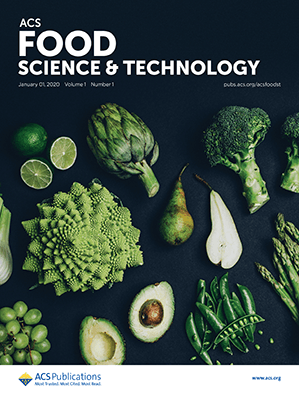Researchers have begun analyzing nutrients and crops to design space food that can deliver both basic nutritional needs and the flavors of an enjoyable, satisfying meal.

Long-term human space missions face a number of challenges and constraints. What first comes to mind is likely efficient ship design, fuel reserves, and cargo space. But what about the menu?
When you think of classic "space food," an image of freeze-dried ice cream may come to mind (a staple of science museum gift shops). And when you think of the kinds of food astronauts might eat, it tends to be in the same vein: dehydrated, foil-wrapped packages of nutritionally calibrated energy, foregoing flavor or texture in favor of engineered practicality.
Part of space food's design is necessary due to the various physiological changes caused by microgravity. For example, eating too much salt in space can escalate bone density loss.1 Astronauts also burn more calories, requiring extra micronutrients like calcium and twice the amount of protein and carbs that they would on Earth.
An additional consideration when designing space food is that it needs to be stored for long periods without refrigeration. The International Space Station maintains at least six months’ worth of space agency-approved food, all of which can be 'cooked' simply by heating or just adding hot water.1 In practice, this means crews can live on six different types of food for the duration of their stay: thermostabilized, rehydratable, irradiated, intermediate moisture, natural form, or fresh.2
But if we plan to make longer forays into the solar system, then we need to come up with new ideas for space food. What we eat has an impact on more than just our nutrition. The pleasure we derive from foods is not driven by nutritional value, but is a multi-sensory experience based on flavor and texture—not to mention a sense of satisfaction in careful preparation. Understanding how our brains relate to food and satiety could be important when considering long-term space missions, beyond simply treating food as fuel.
Now, new work published in ACS Food Science & Technology reports on the optimal space meal: a salad.3 This recipe uses fresh ingredients that meet most male* astronauts’ specialized nutritional needs and can be grown in space with minimal resource requirements.
Using linear programming, the researchers explored 10 different scenarios, resulting in a salad recipe containing soybeans, poppy seeds, barley, kale, peanuts, and sweet potato (with optional sunflower seeds). These crops need little fertilizer, time, and room to grow—and inedible parts of the plants can be recycled. Testers found the salad to be enjoyable, although there was still a need for some supplementary micronutrients. Previous research has found that many crops, including wheat, soybeans, lettuce, peppers, tomatoes, and strawberries are also suitable for growing in space,4 which could help to give variety over the long term.

Growing plants in space—either on a ship or within an alien atmosphere— will naturally have various stressors, where conditions of light, water, air, and radiation do not match those on Earth.5 But these are not always negative, and some can be harnessed to improve production. To do so will require interdisciplinary working between system engineers, plant biologists, photochemists, and physicists. However, people with purely vegetarian diets do need to consume more weight or volume of food, since the caloric value of plants is typically low. With further research needed, laboratory-grown meat or aquaculture could also one day be an option to fulfill caloric needs during long-term space travel.
More work will also need to be done around space packaging, since every item on board must justify its weight.6 Some of the same team members from the space salad study have also reviewed current and future prospects for producing bioplastic films from starch and chitosan.7 Not only are these films lighter than traditionally space packaging, freeing up valuable cargo space, but they are bio-based and biodegradable, which on longer missions means they could be composted, returning carbon, oxygen, and, nitrogen into the crop cycle.
The need for this technology isn’t actually all that far off. NASA is working on sending astronauts to Mars in the 2030s—a round trip of more than two billion miles that will take more than two years to complete.8 As we venture further into the cosmos, maintaining astronauts' morale and well being will be of utmost importance—and the evolution of space food from mere sustenance to a source of culinary delight may very well be a key contributor.
*This study concentrated on adult male astronauts due to the historical prevalence of men in the role, and limited data on gender-based nutritional differences. But the authors note that considerations for female astronauts will be explored in subsequent research.
References
- https://blogs.esa.int/tim-peake/2016/03/18/refuelling-astronauts/
- Classifying Space Food. National Aeronautics and Space Administration (NASA) Space Food and Nutrition Educator Guide.
- Liang, S. et al. Modeling of Space Crop-Based Dishes for Optimal Nutrient Delivery to Astronauts and Beyond on Earth. ACS Food Sci. Technol. 2024, 4, 1, 104–117.
- Growing Plants in Space. National Aeronautics and Space Administration (NASA).
- Hessel, V. et al. Eustress in Space: Opportunities for Plant Stressors Beyond the Earth Ecosystem. Front. Astron. Space. Sci. 2022, 9.
- Space Food Packaging Facts. NASA Food Technology
Commercial Space Center (NASA FTCSC) 2003. - Nguyen, M. T. P. et al. A Review of the Current and Future Prospects for Producing Bioplastic Films Made from Starch and Chitosan. ACS Sustainable Chem. Eng. 2024, 12, 5, 1750–1768.
- Humans in Space: Mars. National Aeronautics and Space Administration (NASA).
